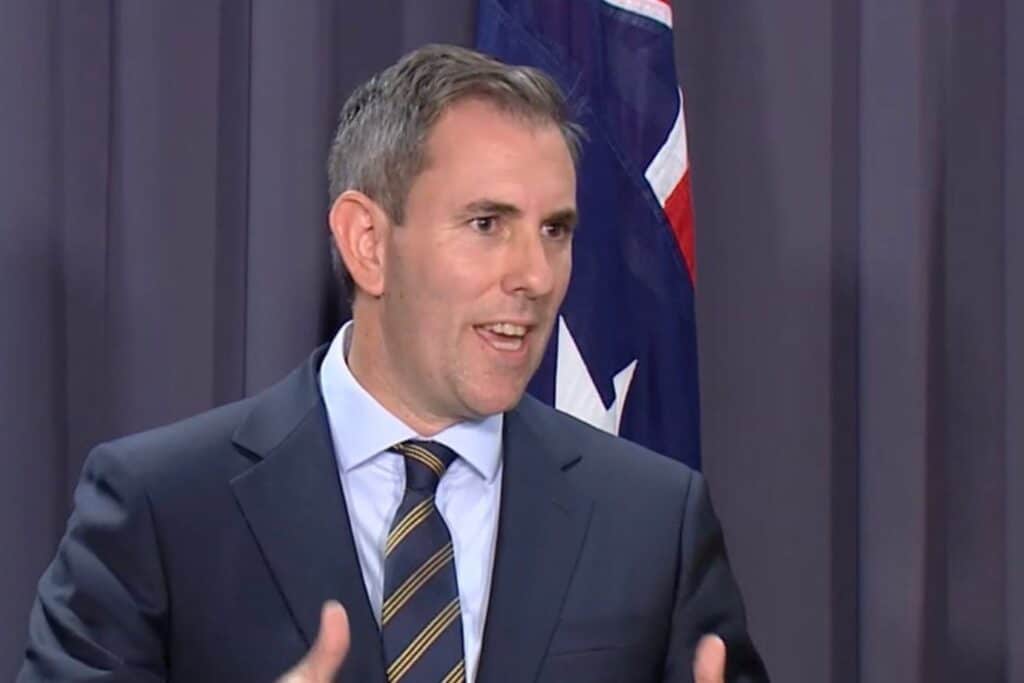One for mum, one for dad and one for the country.
Former treasurer Peter Costello said this iconic line in 2004, as the Howard government unveiled its “baby bonus” scheme, encouraging population growth with a financial incentive for families.
That was 20 years ago, but the sentiment is still alive and well – this time from the Albanese Labor government. In an interview on The Morning Edition podcast with The Sydney Morning Herald, Treasurer Jim Chalmers said he would like to see more people having children for the good of the country.
“It would be better if birth rates are higher,” he said.
“I think people are leaving it later. And sometimes that means you get timed out. But there are a whole range of reasons people’s preferences are changing. It’s expensive to raise kids.”
Chalmers is right – having children is a major financial decision, and it’s even harder to support a family in this economy than it was in the Howard-Costello period two decades ago.
Australia is currently experiencing one of the lowest fertility rates in history: according to the Australian Bureau of Statistics, the predicted average fertility rate – the number of children a woman is expected to have in her lifetime – is 1.6, significantly lower than the international average of 2.3.
Our country’s natural population growth rate is 14 per cent lower than in 2019, and almost 20 per cent lower since the last time Australia was in economic turmoil, the global financial crisis in 2008.
Of course, this poses a problem: how can a country function without a stable population? In saying that, should women be facing this pressure and responsibility to have children in order to keep Australia alive?
Quite the pickle indeed.
How to address population growth
As Dr Marg Rogers wrote last month, women are choosing to have fewer babies, or to not have children at all. There are several reasons to account for this: women are more educated and therefore participating in the workforce more, have more access to contraception and are being guided less and less by religion and traditional gender roles.
One that Jim Chalmers addressed in his interview with the Herald is how much it costs to raise a family – something he says the government is addressing head-on with policies like the expansion of childcare access, paying superannuation on paid parental leave and more.
“All of these things are about trying to make it easier for people to have more kids if they want to, and to work more if they want to after they’ve had their kids,” Chalmers said.
“People have got different preferences and we want to make it easier for them to make choices in their own interests.”
These policies do make it easier for parents to choose to have children, without resorting to the (quite unimaginatively named) “baby bonus” from 20 years ago.
But it only addresses the tip of the iceberg, one that represents the myriad of concerns new parents have in bringing a child into this world.
We are facing a climate crisis, where 80 per cent of people displaced by climate change are women. Rates of food insecurity and sexual violence are increased during climate disasters. The prospect of subjecting a baby to all of that is a very real reason why women are choosing not to have children.
Male violence against women and children is astronomically high in this country. In 2024 alone, male violence has stolen the lives of 28 women, according to Destroy the Joint’s Counting Dead Women. Men target our children too: worldwide, it is estimated that up to 1 billion children aged 2–17 years, have experienced physical, sexual, or emotional violence or neglect in the past 12 months.
Then of course, there is the abhorrent humanitarian crisis we are witnessing, and Palestinian women and children are experiencing, in Gaza. More than 1.7 million Palestinians have been displaced and have no access to safe water, and according to the UN, over one million mothers and newborn babies around the world die from infections soon after birth each year.
These are all local, national and global issues that the Australian government is doing very little – if anything at all – to address.
Personally, it’s going to take a lot more than financial help to convince me to have a baby for my country.
While I am nowhere near a point in my life to consider starting a family, I’m not entirely sure it’s even something I want for my future for my own personal reasons.
I know I’m not alone, and this choice should be respected by governments and anyone else concerned about population growth. Women are not baby-making machines whose sole purpose is to support the stability of a nation, and our reproductive choices should not be subjected to government control.
In China, the one-child policy introduced in 1979 was described as a “vicious, inhumane social experiment” by the Human Rights Watch. Not only did it significantly violate the reproductive rights of women, but it also resulted in a 30 million surplus of men, disproportionate age distribution and other detrimental outcomes that have impacted the country’s growth – so much so in 2016 they turned to a two-child policy to try and boost population growth.
This is an extreme example of government intervention in reproductive rights, but demonstrates how delicate the problem of population growth is. So is there another way to secure the future of a society without relying on women to prop up – or slow down – population growth?
Who knows – in another 20 years’ time, governments could still be trying to convince women to have a baby for the country.


